Transform your rainy day into a culinary adventure with five essential indoor cooking methods. You'll love the comforting ritual of baking in your oven at 350°F, perfect for creating everything from crusty breads to decadent desserts. Your slow cooker offers hands-off convenience for hearty one-pot meals, while stovetop simmering lets you craft rich stocks and tender proteins. Try your hand at food dehydrating to preserve seasonal bounty, or embrace steam cooking for nutrient-rich, flavorful dishes. Each technique opens up endless possibilities for mastering your indoor kitchen domain.
Baking With Your Oven
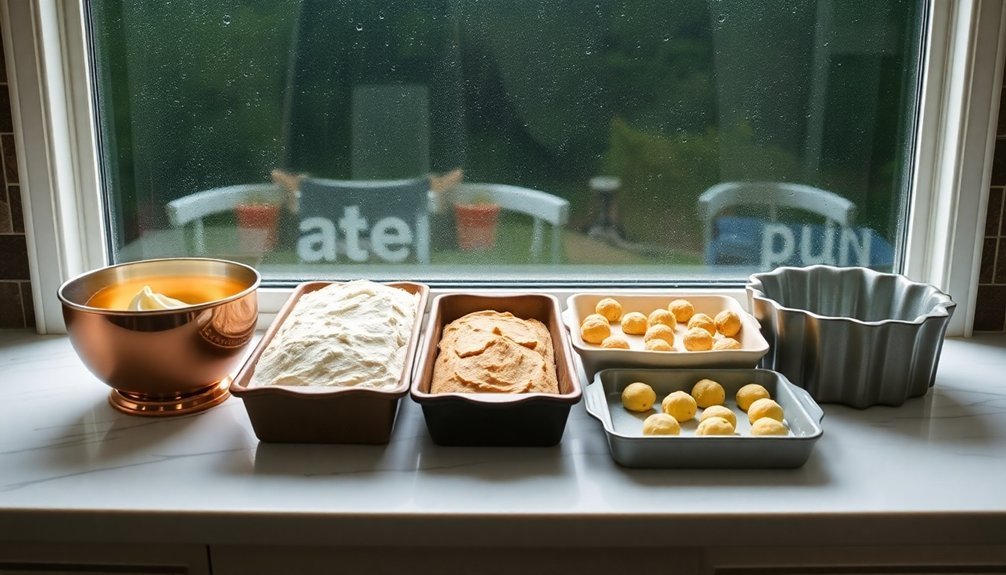
When it comes to baking with your oven, proper preparation and technique are vital for consistent results. You'll need to preheat your oven to the right temperature, typically 350°F, and allow 5-10 minutes for it to reach the desired heat. Using an oven thermometer helps guarantee accuracy. Clean, grease-free bowls are essential for whipping egg whites to proper peaks.
Before you start mixing ingredients, measure everything precisely. Remember to soften butter to room temperature and pack brown sugar firmly into measuring cups.
Keep your workspace clean and organized to prevent cross-contamination, and always wash your hands thoroughly before handling food.
Follow recipe instructions carefully for specific baking times and temperatures. If you're making cookies or sheet-baked goods, proper venting is critical for achieving crispy textures.
For meat-containing dishes, check internal temperatures to guarantee food safety.
Slow Cooker One-Pot Meals
Three essential elements make slow cooker one-pot meals a convenient cooking method: minimal preparation, hands-off cooking, and delicious results.
You'll find this method perfect for creating hearty dishes like chicken and quinoa stew, vegetable curry, or butternut squash chili.
To guarantee success, fill your slow cooker between one-half and two-thirds full, and layer ingredients strategically.
Place root vegetables at the bottom, followed by meat in the middle. For maximum flavor, sauté aromatics like onion and garlic before adding them. Using non-stick liners can make cleanup much easier after cooking.
You can cook on low for 6-8 hours or high for 3-4 hours, but always use thawed ingredients to prevent bacterial growth.
Don't forget to add fresh herbs or citrus at the end to brighten the dish's flavors.
Stovetop Simmering Techniques

Understanding stovetop simmering techniques can transform your cooking from basic to professional-level results. To achieve the perfect simmer, fill your pot with enough liquid to cover your ingredients, then adjust your heat until you see small bubbles gently breaking the surface. The ideal temperature ranges from 185-205°F.
This gentle cooking method helps enhance flavor development in your dishes. You'll want to master three main simmering levels: low simmer for stocks and braises, regular simmer for soups and chili, and rapid simmer for reducing sauces.
When simmering proteins, you'll get tender results by maintaining a steady temperature. For vegetables and delicate ingredients, a gentle simmer prevents them from breaking down while absorbing flavors.
Remember to stir occasionally and adjust your heat as needed to maintain the right bubble activity.
Indoor Food Dehydrating
Modern food dehydrators have revolutionized the way home cooks preserve their favorite ingredients. You'll find these efficient appliances maintain ideal temperatures between 140°F to 165°F, preventing both cooking and mold growth while preserving nutrients.
When you're choosing a dehydrator, consider models with horizontal airflow, which prevents flavor mixing and guarantees even drying. You'll want to look at the number of trays and capacity that suits your needs.
Models like Cosori and Presto offer features such as digital controls and automatic shut-off timers. The cost of quality dehydrators can range from fifty to thousand dollars.
You can dehydrate everything from fruits and vegetables to herbs and meats. Just remember not to overcrowd the trays, and keep them clean for best results.
For durability, opt for stainless steel trays over plastic ones, though they'll cost more.
Steam Cooking Essentials
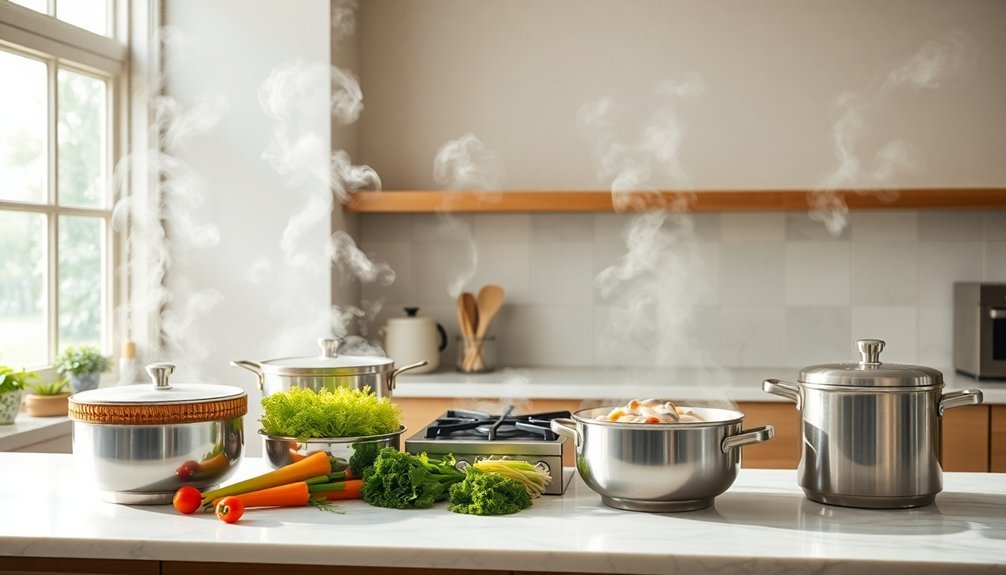
Steam cooking stands as one of the healthiest and most versatile food preparation methods available to home cooks.
You'll find that steam preserves nutrients while ensuring even cooking at lower temperatures, making it perfect for delicate foods and tough ingredients alike.
Whether you're preparing vegetables, fish, dumplings, or rice, steam cooking offers remarkable benefits:
- Retains essential vitamins and minerals that often get lost in other cooking methods
- Supports weight management by eliminating the need for added fats
- Provides gentle, even heating that prevents overcooking
- Makes food easier to digest while maintaining natural flavors
For best results, consider investing in a countertop steamer if you're tight on space, or explore traditional bamboo steamers for authentic dim sum preparation.
Remember that stainless steel equipment offers the most durability and easiest maintenance for regular use.
Frequently Asked Questions
How Can I Prevent Humidity From Affecting My Spice Storage on Rainy Days?
You'll protect your spices from humidity by using airtight glass containers, adding silica gel packs or rice grains as moisture absorbers, and storing them in closed cabinets away from steamy areas in your kitchen.
What Alternate Power Sources Work for Meal Prep During Storm-Related Outages?
You can rely on portable butane stoves, rocket stoves with proper ventilation, Kelly Kettles, or Volcano stoves during outages. Don't forget chemical heaters and thermal cooking methods as backup power-free alternatives.
Which Indoor Cooking Methods Use the Least Electricity During Weather Emergencies?
You'll use zero electricity with butane stoves, thermal cookers, hay box ovens, tea light cookers, and fondue pots. They're safe for indoor cooking when you've got proper ventilation during power outages.
Can Rainy Weather Impact Fermentation Times for Homemade Bread and Yogurt?
Yes, you'll notice rainy weather affects fermentation. High humidity makes bread ferment faster and requires less water in recipes. However, yogurt fermentation isn't markedly impacted since it's done in sealed containers.
Should Indoor Cooking Temperatures Be Adjusted When There's High Humidity Outside?
Yes, you'll need to adjust cooking temperatures when humidity's high. You should lower temperatures by 25°F and extend cooking time slightly, or your food may become too moist and take longer to brown properly.
In Summary
Don't let a rainy day dampen your culinary adventures! You've now got five reliable indoor cooking methods at your disposal. Whether you're baking treats in the oven, letting your slow cooker do the work, simmering soups on the stovetop, dehydrating snacks, or steaming healthy meals, you'll stay dry while creating delicious food. These techniques will keep you cooking comfortably no matter what the weather brings.

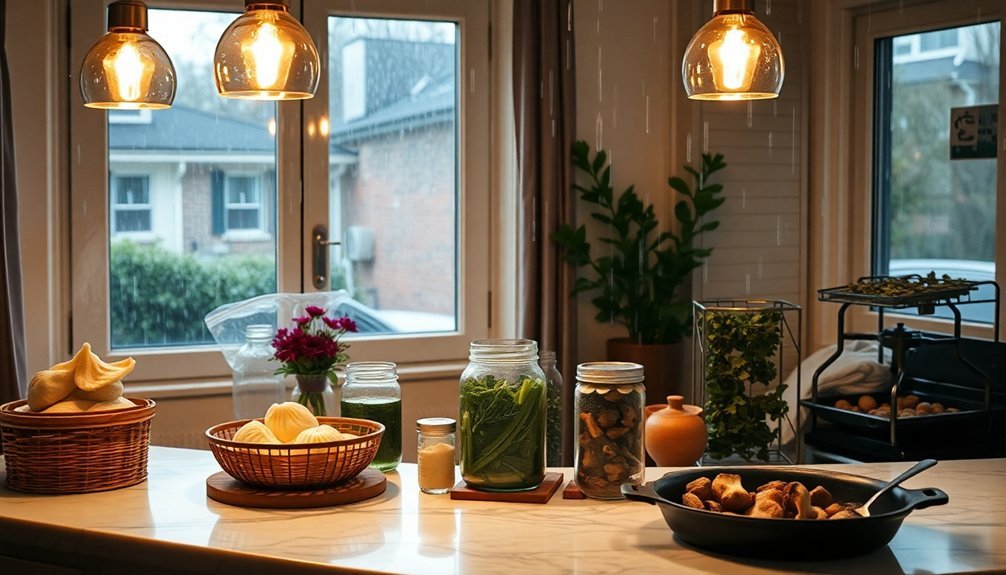
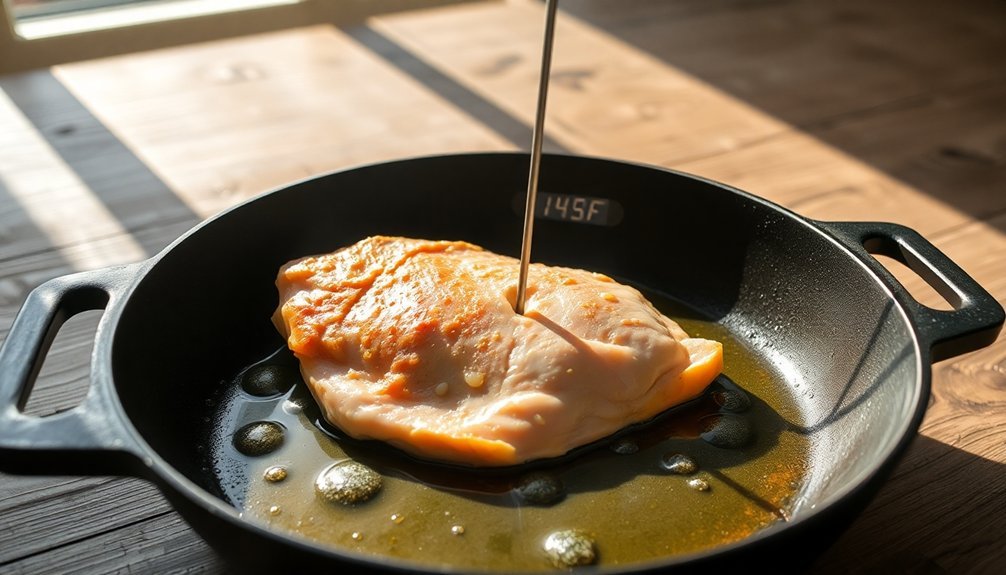
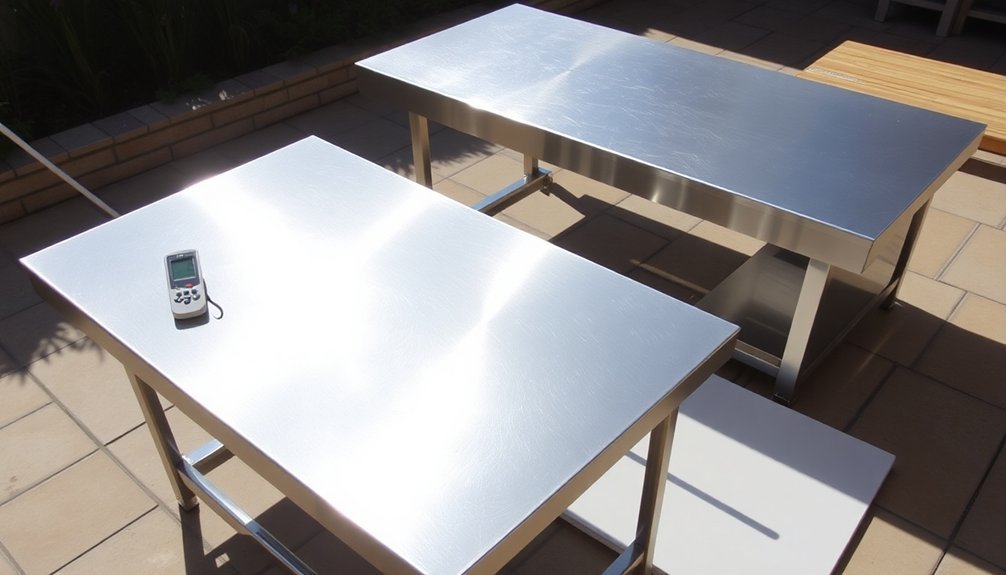
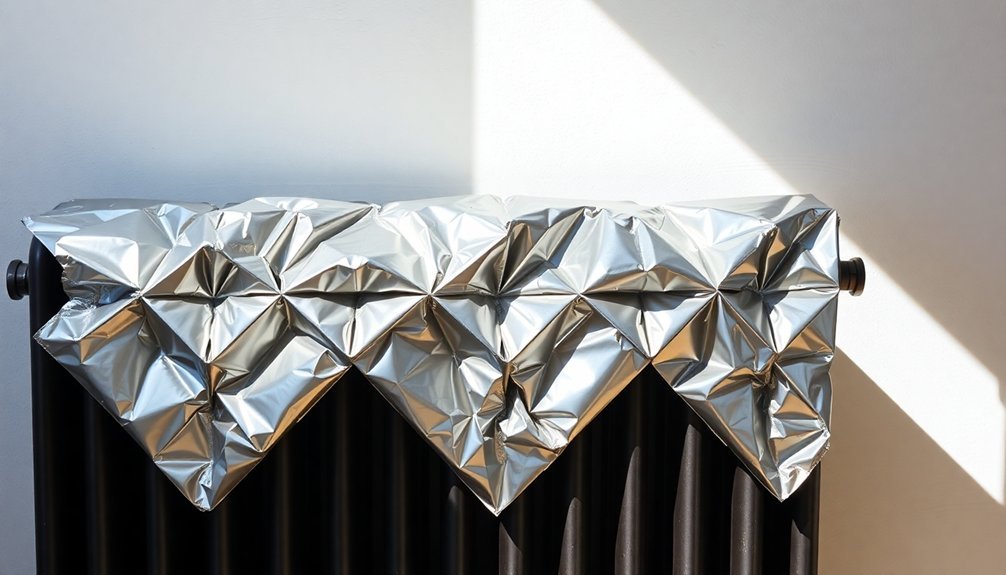
Leave a Reply